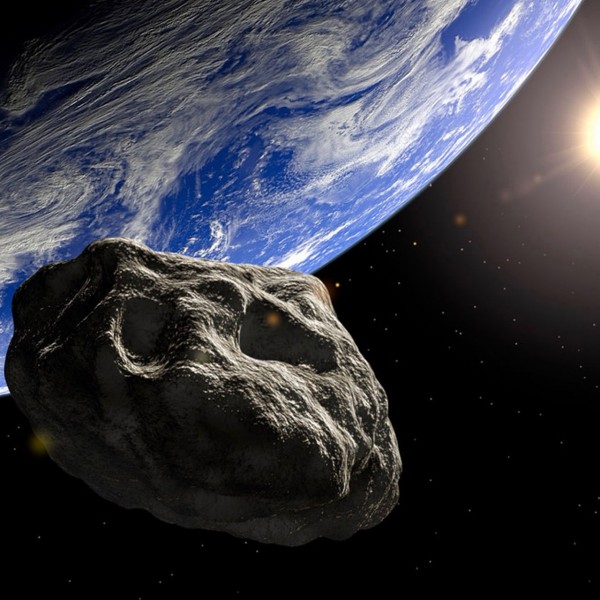Small asteroid detected 4 days after passing as close as satellites

On March 15, 2016, astronomers detected a space rock – now designated as asteroid 2016 EF195 – using the PanSTARRS 1 telescope at Hawaii. Surprisingly, as they analyzed its trajectory, they realized it had been closest to Earth on March 11 at 03:52 UT (March 10 at 10:52 pm ET). This means the asteroid’s closest approach occurred 4 to 5 days before it was seen. Moreover, they realized that asteroid 2016 EF195 flyby had passed at about 23,900 miles (38,463 km) from the surface of our planet, or about 0.1 the Earth-moon distance.
For comparison, TV and other communications satellites orbit Earth at 22,300 miles.
Asteroid 2016 EF195 has a size between 16 to 49 meters (52 to 161). That means this space rock has an average size about twice as big as the asteroid that penetrated the skies over Chelyabinsk, Russia in February, 2013, breaking windows in six Russian cities and causing some 1,500 people to seek treatment for injuries, mostly from flying glass.
The stealth space rock is travelling at 22,369 miles per hour (36,000 km/h).
The newly found asteroid also belongs to the Apollo type asteroids, a class of space rocks that sometimes pass close to Earth.
There have also been some small asteroids passing closer to Earth than the moon’s distance during this past month.
On March 10, 2016, small asteroid 2016 EN157 passed at 0.82 lunar distances. While on March 8, small asteroid 2016 EV28, with a size between 3 to 12 meters passed at 0.41 lunar distances.
It must be clarified that asteroids like 2016 EF195 are too small to cause an extinction level event, so we were never at any significant risk from this particular asteroid.
Bigger asteroids are easier to detect. However, even a small asteroid would produce an impressive meteor if it enters our atmosphere.
Can a Chelyabinsk type event repeat? Yes, clearly it can.
In any event, asteroid asteroid 2016 EF195 – passing so closely, unseen – is a reminder of the importance of supporting asteroid detection programs.
Various space agencies are already working towards earlier asteroid detections, but adequate funding is always required.
Bottom line: On March 15, astronomers detected an asteroid – now labeled 2016 EF195 – that had passed closest to Earth on March 11. It passed at about 23,900 miles (38,463 km) from the surface of our planet, or about 0.1 the Earth-moon distance. That’s about the distance of some satellites.











